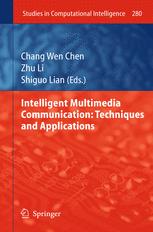

Most ebook files are in PDF format, so you can easily read them using various software such as Foxit Reader or directly on the Google Chrome browser.
Some ebook files are released by publishers in other formats such as .awz, .mobi, .epub, .fb2, etc. You may need to install specific software to read these formats on mobile/PC, such as Calibre.
Please read the tutorial at this link: https://ebookbell.com/faq
We offer FREE conversion to the popular formats you request; however, this may take some time. Therefore, right after payment, please email us, and we will try to provide the service as quickly as possible.
For some exceptional file formats or broken links (if any), please refrain from opening any disputes. Instead, email us first, and we will try to assist within a maximum of 6 hours.
EbookBell Team

4.7
76 reviewsMultimedia data are used more and more widely in human being's life, e.g., videoconferencing, visual telephone, IPTV, etc. Nearly most of the applications need multimedia transmission techniques that send multimedia data from one side to another side and keep the properties of efficiency, robustness and security. Here, the efficiency denotes the time cost of transmission operations, the robustness denotes the ability to survive transmission errors or noises, and the security denotes the protection of the transmitted media content. Recently, various intelligent or innovative techniques are invented, which bring vast performance improvements to practical applications. For example, such content transmission techniques as p2p, sensor network and ad hoc network are constructed, which adaptively use the peers’ properties to improve the network’s resources. Multimedia adaptation techniques can adjust the multimedia data rate in order to compliant with the network’s bandwidth. Scalable encryption techniques can generate the data stream that can be correctly decrypted after bit rate conversion. Ubiquitous multimedia services make the user share any kind of content anywhere.
The book includes fourteen chapters highlighting current concepts, issues and emerging technologies. Distinguished scholars from many prominent research institutions around the world contribute to the book. The book covers various aspects, including not only some fundamental knowledge and the latest key techniques, but also typical applications and open issues. For example, the covered topics include the present and future video coding standards, stereo and multiview coding techniques, free-viewpoint TV techniques, wireless broadcasting techniques, media streaming techniques, wireless media transmission techniques and systems, and User-Generated Content sharing.